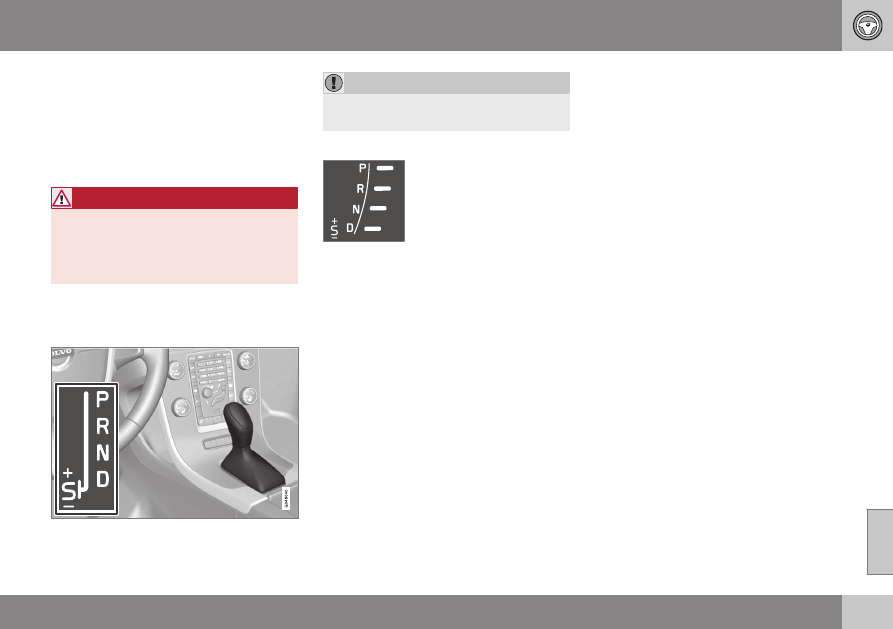Volvo S60 Inscription (2016 year). Manual - part 13

08 Starting and driving
08
217
Shiftlock
When P has been selected, the transmission
is mechanically blocked in this position. The
brake pedal must be depressed and the igni-
tion must be in at least mode II (see Ignition
modes (p. 69)) before the gear lever can be
moved from the P position.
WARNING
Always apply the parking brake when the
vehicle is parked, particularly when park-
ing on a hill. The transmission's P mode
may not be able to keep the vehicle sta-
tionary if it is parked on an incline.
Press the control to apply the parking brake,
see Parking brake – general information
The vehicle must be stationary when posi-
tion P is selected.
Gear indicator
The gear currently being
used is displayed on the right
side of the instrument panel.
The "S" symbol turns orange
if Sport mode is being used.
Reverse: position R
The vehicle must be stationary when position
R is selected.
Neutral: position N
No gear is engaged and the engine can be
started with the gear selector in this position.
Apply the parking brake if the vehicle is sta-
tionary with the gear selector in position N. In
order to move the gear selector from the N
position, the brake pedal must be depressed
and the ignition must be in at least mode II.
Drive: position D
D is the normal driving position. The car auto-
matically shifts between the various forward
gears, based on the level of acceleration and
speed. The car must be at a standstill when
shifting from position R to position D.
Related information
•
Transmission – general information
•
Transmission – Geartronic (p. 218)
•
Transmission – shiftlock override (p. 220)
•